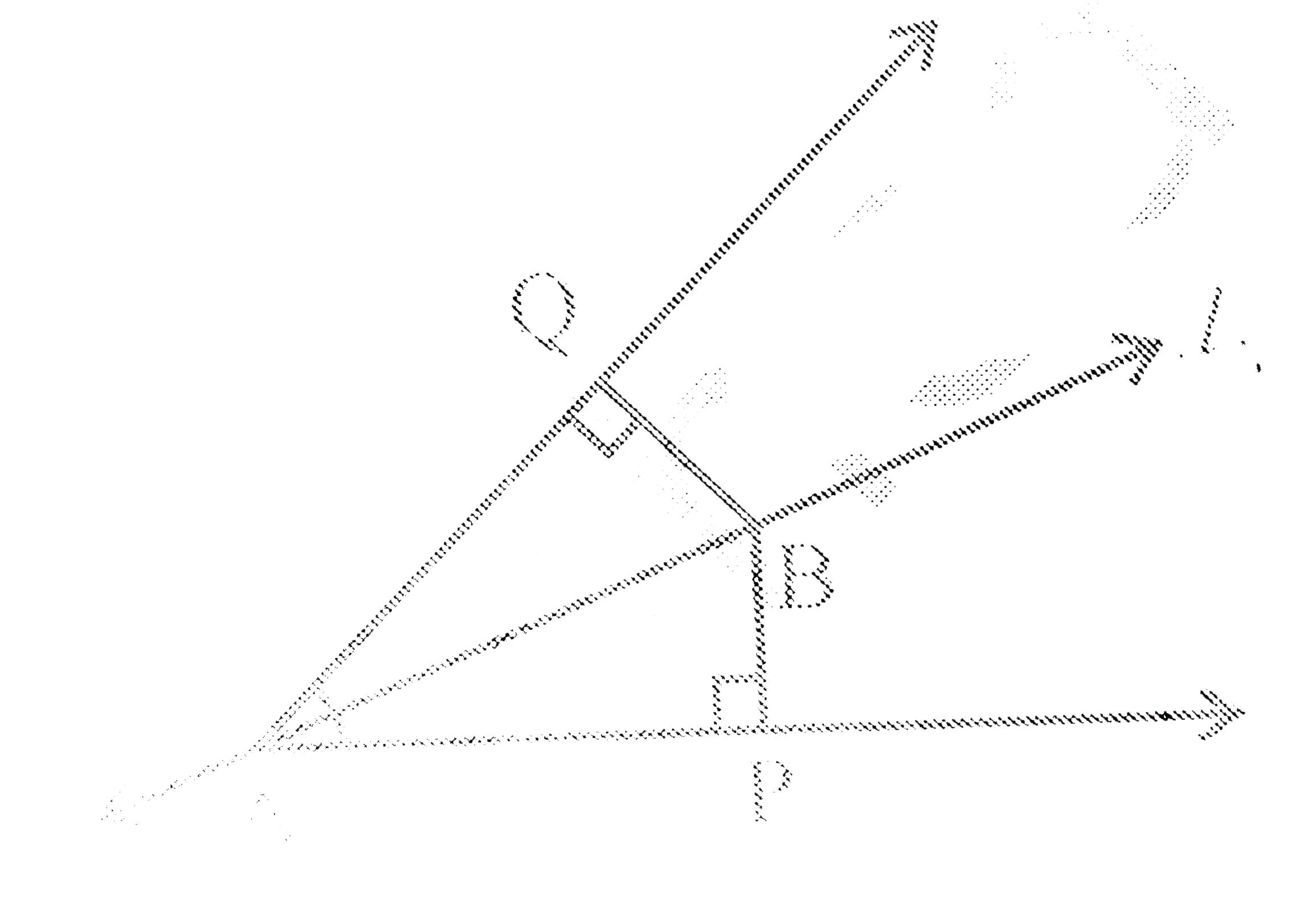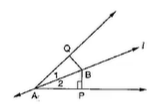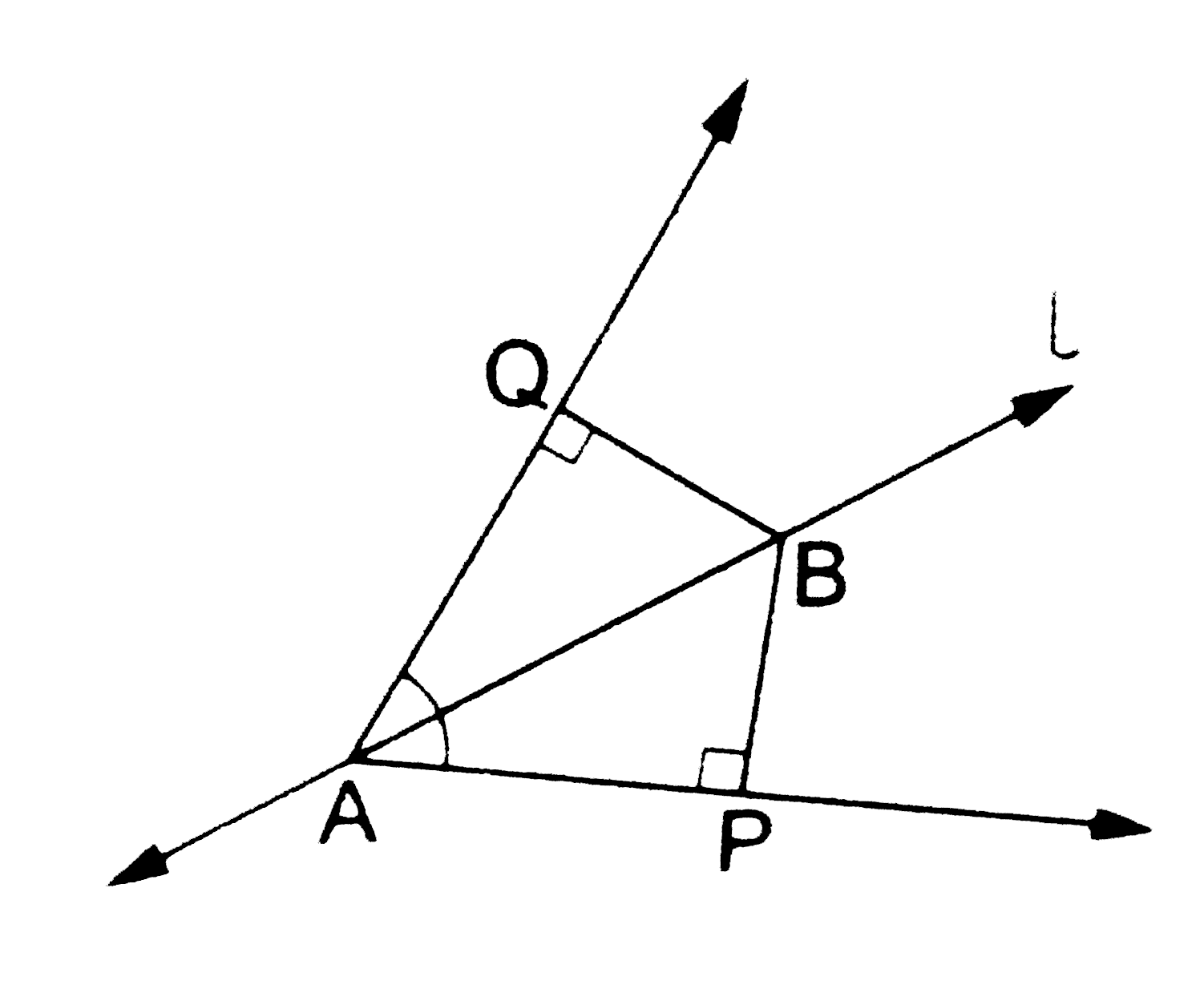Line l is the bisector of an angle ∠A and B is any point on l. BP and BQ are perpendiculars from B to the arms of ∠A (see Fig. 7.20). Show that: (i) △APB≅△AQB
(ii) BP = BQ or B is equidistant from the arms of ∠A.
 Solution in Punjabi
Solution in Punjabi
Step by step video & image solution for Line l is the bisector of an angle angle A and B is any point on l. BP and BQ are perpendiculars from B to the arms of angle A (see Fig. 7.20). Show that: (i) triangle APB cong triangle AQB (ii) BP = BQ or B is equidistant from the arms of angle A. by Maths experts to help you in doubts & scoring excellent marks in Class 9 exams.
Updated on:21/07/2023Topper's Solved these Questions
Similar Questions
In Fig. 7.8, OA = OB and OD = OC. Show that (i) ΔAOD≅ΔBOC and (ii) AD || BC.

View SolutionMary wants to decorate her Christmas tree. She wants to place the tree on a wooden box covered with coloured paper with picture of Santa Claus on it (see Fig. 13.4). She must know the exact quantity of paper to buy for this purpose. If the box has length, breadth and height as 80 cm, 40 cm and 20 cm respectively how many square sheets of paper of side 40 cm would she require?
View Solutionline l is the bisector of an angle ∠A and∠Bis any point on l. BP and BQ are perpendiculars from B to the arms of ∠A. Show that:
(i) ΔAPB≅ΔAQB
(ii) BP = BQ or B is equidistant from the arms of ∠A

View SolutionIn Figure, line l is the bisector of angle A and B is any point on l.BP and BQ are perpendiculars from B to the arms of A. Show that: APB ≅AQB BP=BQ or B is equidistant from the arms of ∠A

View SolutionDetermine the point of symmetry of a regular hexagon.
View SolutionIn the following figure, AB and BC are equidistant from the centre 'O' of the Show that
(a) ABC is an isosceles triangle.
(b) OB bisects angle ABC.
ltimg src="https://d10lpgp6xz60nq.cloudfront.net/physics_images/PS_MATH_X_C13_E02_006_Q01.png" width="80%"gt
View SolutionMatch the following Column A to Column B

View SolutionIn the given figure, line l is the bisector of an angle ∠A and B is any point on l. If BP and BQ are perpendiculars from B to the arms of ∠A, show that
(i) ΔAPB≅ΔAQB
(ii) BP = BQ, i.e., B is equidistant from the arms of ∠A.

View Solutionरेखा l कोण A को समद्विभाजित करती है और B रेखा l पर स्थित कोई बिंदु है। BP और BQ कोण A की भुजाओं पर B से डाले गए लम्ब हैं। दर्शाइए कि
(i) ΔAPB≅ΔAQB
(ii) BP=BQ है, अर्थात बिंदु B कोण की भुजाओं से समदूरस्थ है।

View Solutionरेखा l कोण A की समद्विभाजक है तथा l पर कोई बिंदु B है| BP और BQ बिंदु B से ∠Aकी भुजाओं पर लम्ब है तो दिखाइये कि-

(i) ΔAPB≅ΔAQB
(ii) BP=BQ
View SolutionLine l is the bisector of an angle ∠A and B is any point on li. BP and BQ are perpendicular forms B to the arms of ∠A. Show that:
△APB≅△AQB
(ii) BP = BQ or B is equidisitant from the arms of ∠A.

View Solutionरेखा l कोण A को सम्द्धिभाजित करती है और B रेखा I पर स्थित कोई बिंदु है | BP और BQ कोण A की भुजाओ पर B से डाले गए लम्ब है ( देखिये आकृति ) | दर्शाइए कि-
(i) ΔPB ~-=ΔAQB
(ii) BP -= BQ है, अर्थात बिन्दु B कोण की भुजाओ से समदूरस्थ है |
View SolutionIn Figure, line l is the bisector of angle A and B is any point on l.BP and BQ are perpendiculars from B to the arms of A. Show that: APB ≅AQB BP=BQ or B is equidistant from the arms of ∠A
View SolutionRay 1 is the bisector of an angle ∠ A and B is any point on I. BP and BQ are perpendiculars from B to the arms of ∠ A (see the given figure). Show that:
(i) △APB=△AQB
(ii) BP = BQ or B is equidistant from the arms of ∠A

View Solutionਰੇਖਾ l, ∠A ਨੂੰ ਸਮਦੁਭਾਜਿਤ ਕਰਦੀ ਹੈ ਅਤੇ B, l ਉੱਤੇ ਕੋਈ ਬਿੰਦੂ ਹੈ।BP ਅਤੇ BQ ਬਿੰਦੂ B ਤੋਂ ∠A ਦੀਆਂ ਬਾਹਵਾਂ ਉੱਤੇ ਲੰਬ ਹਨ (ਵੇਖੋ ਚਿੱਤਰ 7.20)। ਸਿੱਧ ਕਰੋ (i) △APB≅△AQB (ii) BP = BQ ਜਾਂ B ਬਿੰਦੂ ਕੋਣ A ਦੀਆਂ ਭੁਜਾਵਾਂ ਤੋਂ ਸਮਾਨ ਦੂਰੀ 'ਤੇ ਹੈ।

View Solution
